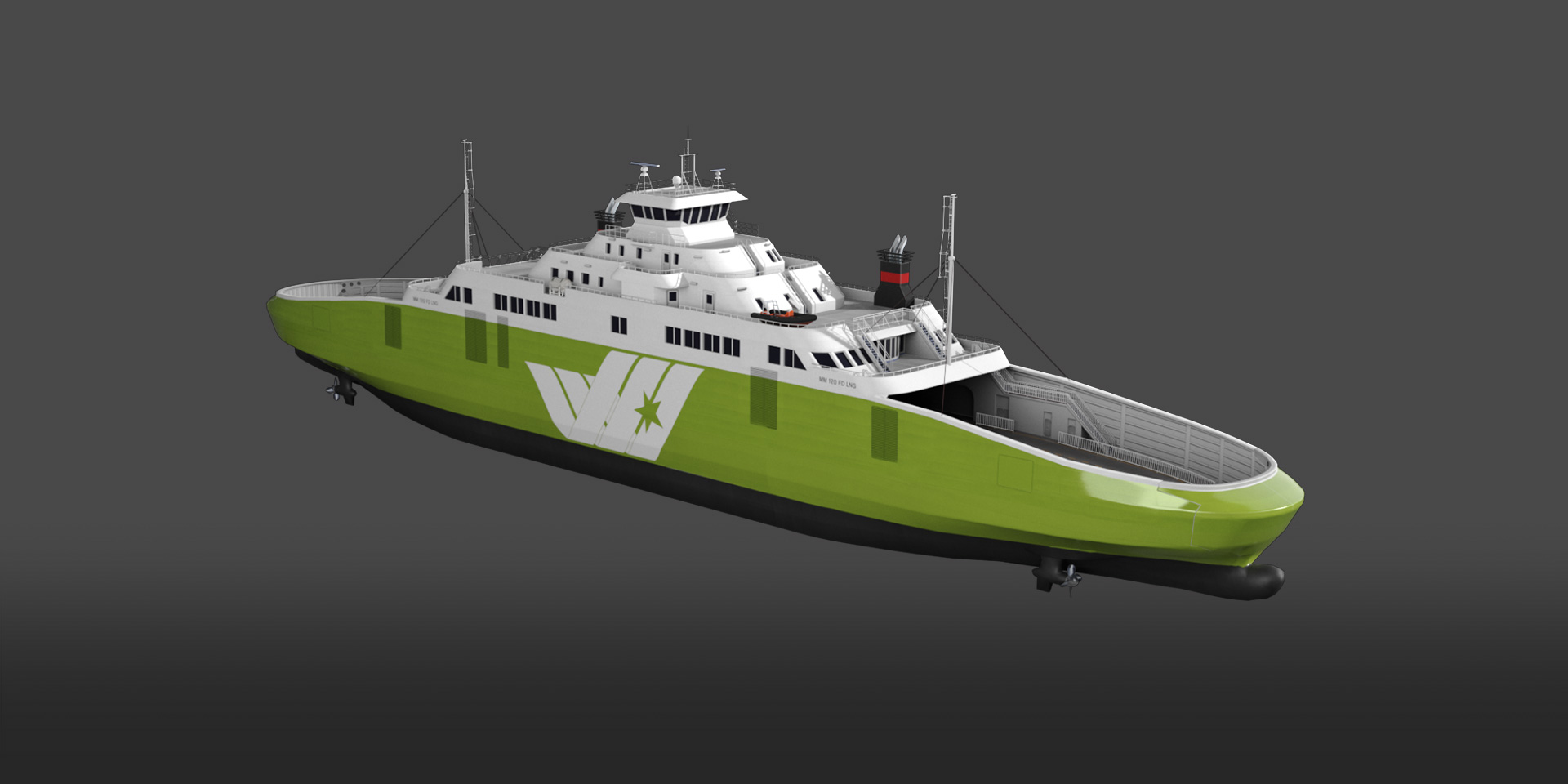1
2
3
4
5
Hotspots
1
Double End
A double-ended ferry is one where vehicles are loaded on and off at both ends of the vessel and the direction of travel switches so that the bow becomes the stern.
2
Safety
The greatest argument for the use of a double-ended ferry is when the route is short, for example, river crossings. This all contributes to safety, a critical factor for any ferry.
3
Double End Propulsion
With one bridge house in the centre of the vessel, the bow and stern propulsion can simply and quickly be changed during a port call.
4
Accommodation
Spacious restaurants, shops, seating areas and toilets can be located above the RoRo deck.
5
Engine System
The most commonly utilised engine system today is either Diesel, GAS (LNG) or Electrical Power driven.
* The Vessels shown here are exemplary Models only.
Passenger Ferry
Passenger AND CAR Ferry without cabins for Short sea transport
A Passenger Ferry can exist in many different variants. However they do share one thing, they are designed to carry passengers. These ships could found as small Ferries crossing a channel, river or a lake or as large Seagoing Ferries crossing the open seas between countries or different destinations. Propulsion of Passenger Ferries could from gas turbine, diesel or Electrical engines and they can be equipped with either conventional propellers or water-jet units. Design speed is from 6 up to 40+ knots. Passenger Ferries can also be found as single hull, multi-hull (i.e. catamaran) hydrofoil and hovercraft design.
Contact us
This site is protected by reCAPTCHA and the Google
Privacy Policy and
Terms of Service apply.



